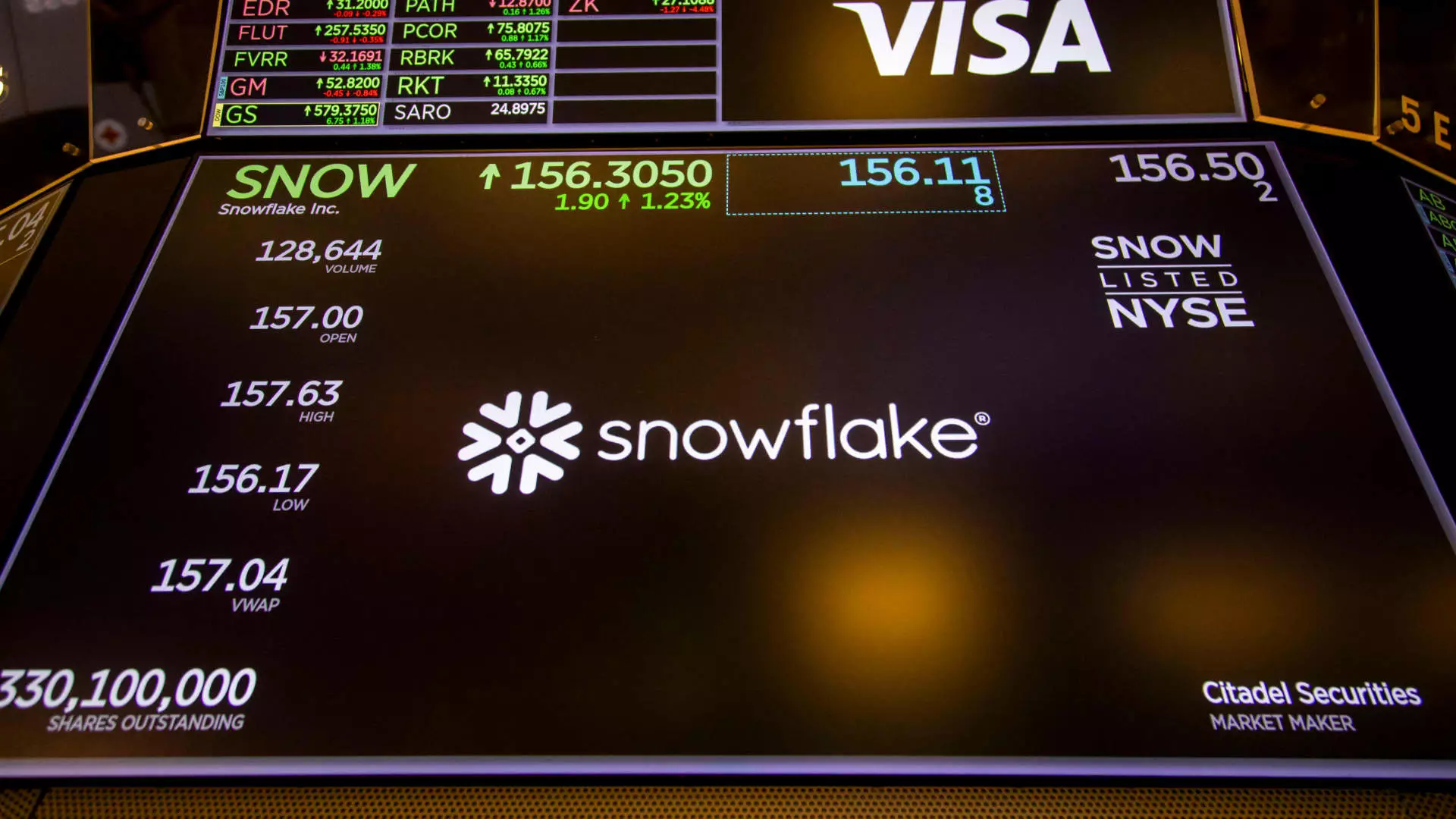In an era where data is the lifeblood of organizations, Snowflake has decisively demonstrated its capability to thrive amidst fierce competition. Following its recent financial report, the company’s shares surged an impressive 12%—marking a remarkable resurgence and reaching levels unseen since early last year. For those watching the tech industry, this spike was not merely a blip but a testament to Snowflake’s robust strategy and growing influence in the data analytics space. Its ability to exceed revenue expectations—$1.04 billion in fiscal Q1 2026 against an anticipated $1.01 billion—signals a turning point for a company that went public just a few years ago.
Revenue vs. Losses: A Double-Edged Sword
However, the narrative isn’t entirely positive. While Snowflake celebrates a 26% increase in revenue compared to the previous year, it must reckon with a mounting net loss of $430 million for the quarter—a stark contrast to its rising sales. Such losses, while common in a rapidly growing tech firm, raise questions about sustainability. Is Snowflake investing wisely in its future, or is it merely masking deeper operational challenges? The hefty losses, which widened since last year, might frighten conservative investors seeking stability in a volatile market. It’s essential to scrutinize the path Snowflake takes as it digs deeper into the artificial intelligence sector, a direction that could either solidify its lead or further weigh down its financials.
AI Integration: A Game-Changer or a Gamble?
The company’s strategic pivot toward artificial intelligence services is particularly noteworthy. This domain has proven transformative for many firms, propelling them into new heights of efficiency and customer engagement. Snowflake now boasts a customer base of 11,000, which is no small feat. Analysts are taking notice, particularly following the closure of two significant $100 million deals that had been absent in the previous quarter. Yet, this still raises concerns about customer turnover and retention—what some in the industry are terming “churn worries.”
If Snowflake can mitigate these churn risks while cultivating a loyalty among its burgeoning customer base, it may indeed weather the storm of increasing losses. The support from firms like Cantor, who have also issued a buy recommendation, reflects a cautious optimism, yet investors must remain vigilant. The question arises: Can Snowflake maintain its upward momentum?
A Look Ahead: Steadfast Execution Required
With a remarkable year-to-date increase of 29% in its share price—as the Nasdaq shows signs of struggle—Snowflake appears poised for further success. Yet, execution will be critical. The company’s ability to uphold a “beat-and-raise” methodology is essential for maintaining investor confidence. As artificial intelligence continues to reshape industries, Snowflake must cultivate adaptability and foresight, ensuring that it does not just ride the wave but also innovates and leads the charge.
In the end, while the highs of today are worthy of celebration, the financial reality Snowflake grapples with demands a balanced perspective. The company’s journey is far from over, and as the data landscape evolves, so too must Snowflake. It holds the potential to become a powerhouse, but strategic navigation through its financial hurdles will determine whether it thrives or merely survives.


Leave a Reply